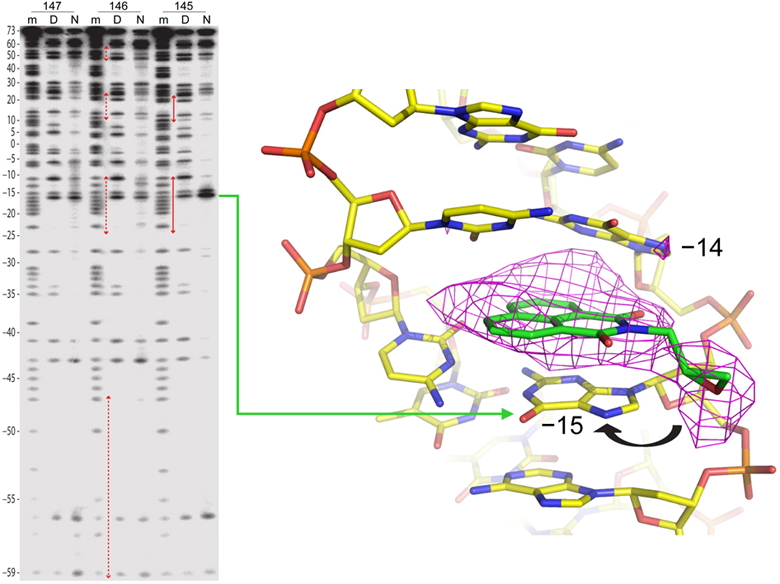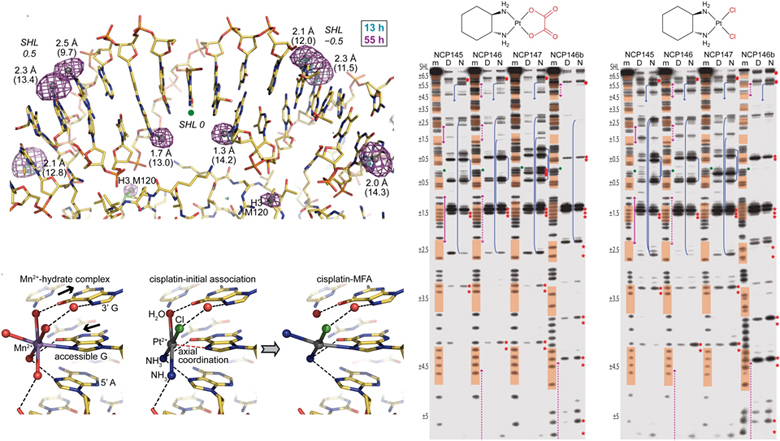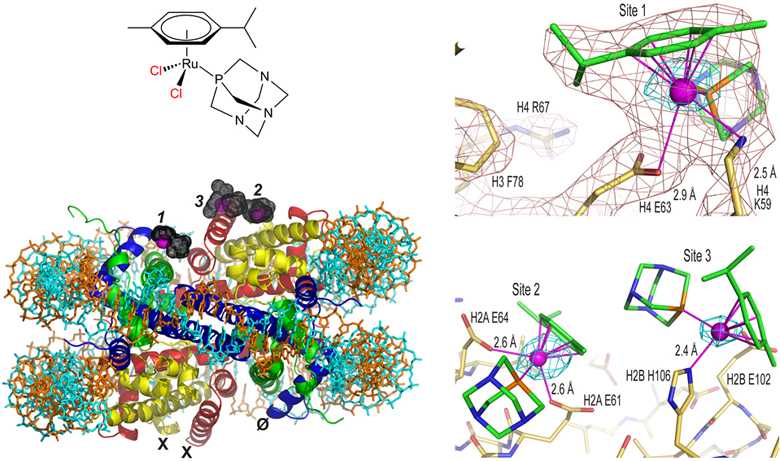We are working out adduct structure, site selectivity, modulatory and reaction mechanism principles for a variety of chomatin-binding agents, which, together with understanding how macromolecules recognize specific chromatin states, can reveal novel genomic regulatory features, allowing us to engage in directed drug design and potentially discover new therapeutic targets. Our chromatin drug development program involves many collaborators around the globe, allowing us to employ a comprehensive repertoire of chemical, physical, structural and cellular techniques. The focus is mainly on metal-based anticancer agents, which have the potential advantage that distinct characteristics of coordination geometry, redox state and ligand exchange rates allow one to fine-tune reactivity and recognition properties of the compounds.

The unique histone binding motif situated 1.5 double helical turns from the nucleosome center can induce a massive kink distortion in certain DNA sequences (Ong, Richmond, Davey, 2007). This creates a hotspot for DNA intercalation and alkylation by an epoxide antitumor species (Davey, Wu, Dong, Surana, Davey, 2010).

Steric accessibility governs platinum anticancer drug-DNA adduct formation, and other double helical structural attributes modulate the generation of therapeutically active cross-links (Wu, Davey, Nazarov, Dyson, Davey, 2011).

Because of the severe side effects and resistance issues associated with the classic platinum drugs, a lot of interest has been building towards the development of anticancer agents based on alternative metal centers. Ruthenium-based compounds have shown great therapeutic promise from their activity against specific cancer cell types combined with their low toxicity. We found that one of the antimetastasis agents, RAPTA-C, associates with chromatin in cancer cells and forms stable, well-defined adducts in the nucleosome core at specific histone protein sites (Wu, Ong, Groessl, Adhireksan, Hartinger, Dyson, Davey, 2011).
Best viewed with Microsoft IE 8 and Firefox 3.5 and above. Older browsers are not supported.
School of Biological Sciences, 60 Nanyang Drive, Singapore 637551. Tel: (65) 6316-2801 Fax: (65) 6791-3856.
© Curt Davey. All rights reserved.



